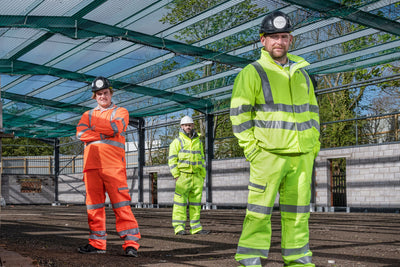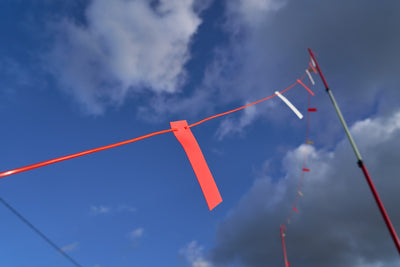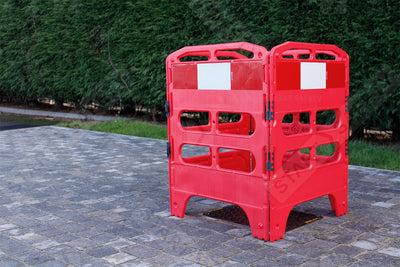The Essential Guide to Event Management Safety Equipment and Planning in the UK
In the UK, ensuring health and safety at events is not just best practice - it's a legal obligation under laws such as the Health and Safety at Work etc Act 1974 and the Management of Health and Safety at Work Regulations 1999. Whether you're organising a local festival, stadium concert, or corporate conference, effective event safety management relies on detailed planning and the appropriate levels of event safety equipment.
This guide, written by Start Safety’s experts, explores what equipment is needed, how it ties into your legal responsibilities, and how UK-based professionals can build expertise in event management health and safety.

Why Event Safety Equipment is Vital
Event risk management and safety is a multi-faceted discipline. Risks such as crowd surges, electrical faults, fire hazards, and medical emergencies require reliable equipment and clear procedures. In the UK, event organisers are required to take "reasonably practicable" steps to prevent harm, which includes deploying proper event safety equipment like:
- Fire extinguishers and fire blankets (meeting British Standards)
- Crowd control barriers and fencing
- Emergency lighting and signage
- Public Address (PA) and radio communication systems
- First aid kits and Automated External Defibrillators (AEDs)
- Portable safety lighting for temporary structures
- Ground protection mats to provide a flat, even ground surface for foot traffic
- Cable ramps to remove hazards around free-laying cables
These tools support broader strategies around safety and security in event management, especially at large or high-risk venues like festivals, sporting events, and fairs.
The Event Safety Management Plan
A robust event safety management plan is not just helpful - it’s an expectation by local authorities and emergency services during event licensing. UK guidance such as the Purple Guide provides a framework, and many organisers rely on an event safety management plan template to build a tailored approach for each event that they are involved in.
Your plan should cover:
- Full event management safety checklist
- Detailed crowd dynamics analysis
- Hazard identification and risk control measures
- Emergency response planning
- Roles and responsibilities of safety stewards and staff
- Integration with local services (police, NHS, fire)
UK Training and Qualifications in Event Safety
To meet professional and legal standards, training in event safety management is an important part of the event management and planning process. There are several different options available in the UK, including:
IOSH Event Safety Management Courses
Offered by the Institution of Occupational Safety and Health (IOSH), these courses focus on practical risk management, legislation, and operational control.
Event Safety Management Diplomas
These Level 5 or higher vocational qualifications are ideal for event managers seeking formal accreditation in health and safety in event management.
Many courses align with the UK’s National Occupational Standards (NOS) and support continuous professional development (CPD).
Crowd and Health & Safety Considerations
1. Health and Safety Event Management
From catering hygiene to crew welfare, compliance with HSE (Health and Safety Executive) regulations is mandatory. Your safety plan must also include Control of Substances Hazardous to Health (COSHH) assessments and manual handling policies, where applicable.
2. Event Safety and Crowd Management
The UK has a strong emphasis on crowd safety, particularly after incidents like the Hillsborough disaster. Proper barrier systems (like Chapter 8 barriers for instance), ingress/egress planning, and steward training are all essential components.

3. Medical & Fire Safety Provisions
Ensure compliance with the Regulatory Reform (Fire Safety) Order 2005, and consult local ambulance trusts or St John Ambulance for medical coverage.
The Regulatory Reform (Fire Safety) Order 2005 is a key piece of legislation in England and Wales that consolidates and simplifies previous fire safety laws for non-domestic premises. It places legal responsibility on a designated “Responsible Person” - typically an employer, building owner, or manager - to assess and manage fire risks in their premises.
Creating a Safety-First Culture at UK Events
Promoting safety management for events in the UK means more than ticking boxes. Here are some best practices:
- Use a comprehensive event management safety checklist
- Liaise early with Safety Advisory Groups (SAGs)
- Conduct full risk assessments using templates from HSE or the Purple Guide
- Regularly test and maintain event safety equipment
- Train all staff, volunteers, and contractors in event-specific safety protocols
Successful UK events require a commitment to both compliance and care. A proactive approach to health and safety in event management, backed by training, planning, and high-quality equipment, protects everyone - guests, staff, and organisers alike.
Thankfully, injuries and fatalities at events in the UK are rare, thanks to the strict health and safety protocols needed to get them off the ground in the first place.
Whether you’re pursuing an event safety management diploma, taking IOSH event safety management courses, or preparing a licensing application, the right knowledge, equipment, and tools are key. Don’t wait for an incident to highlight a gap in your planning.
- Author





